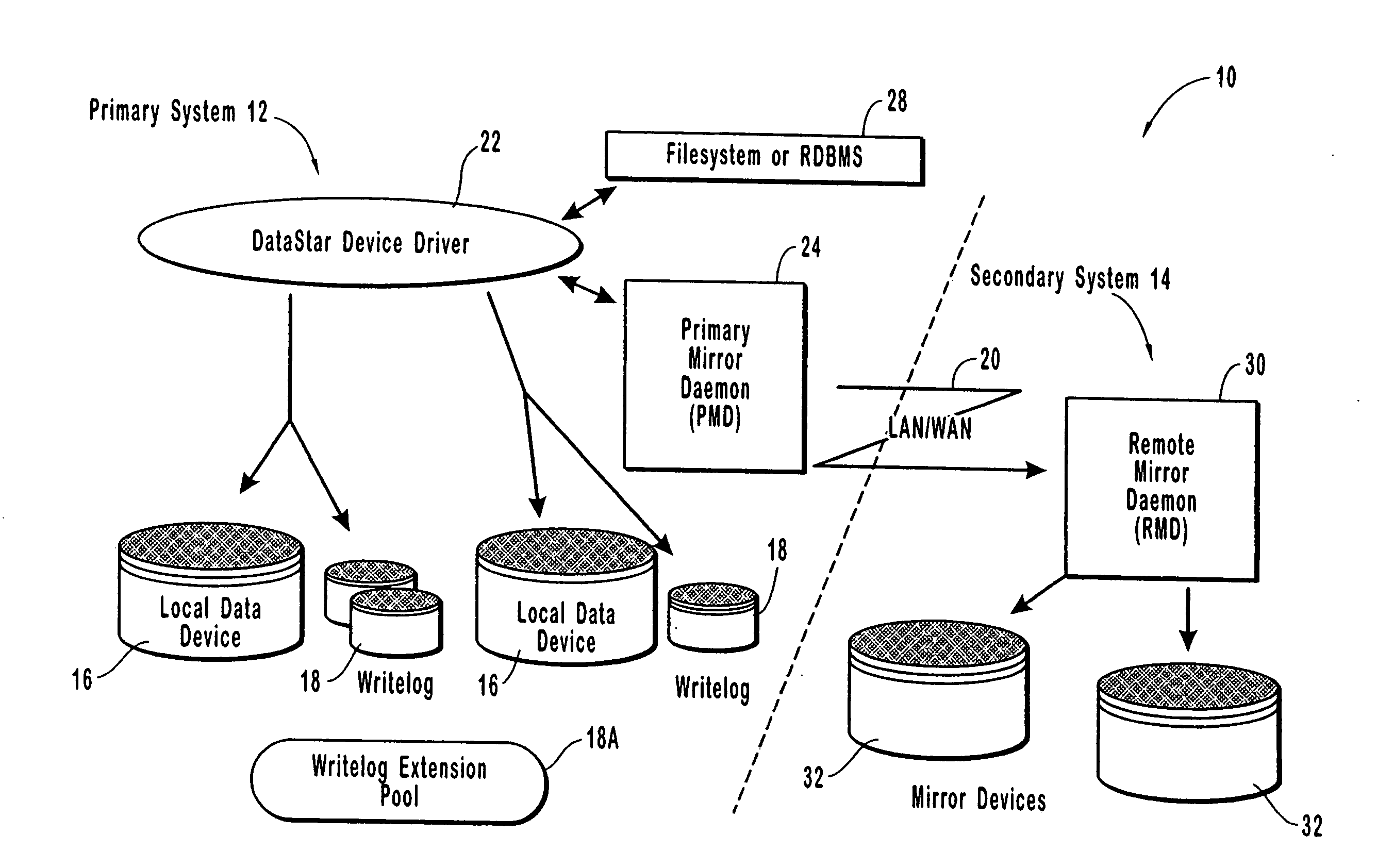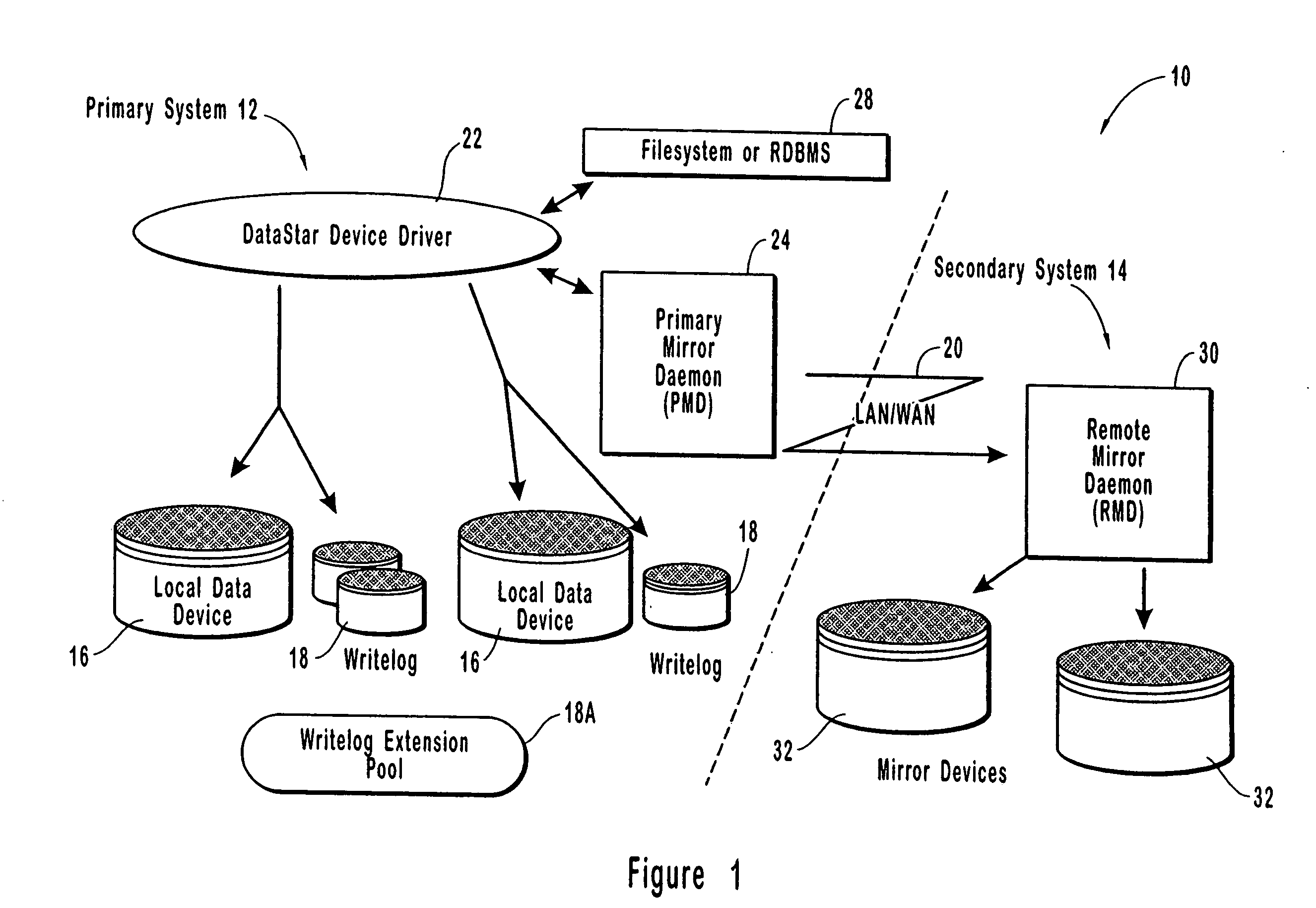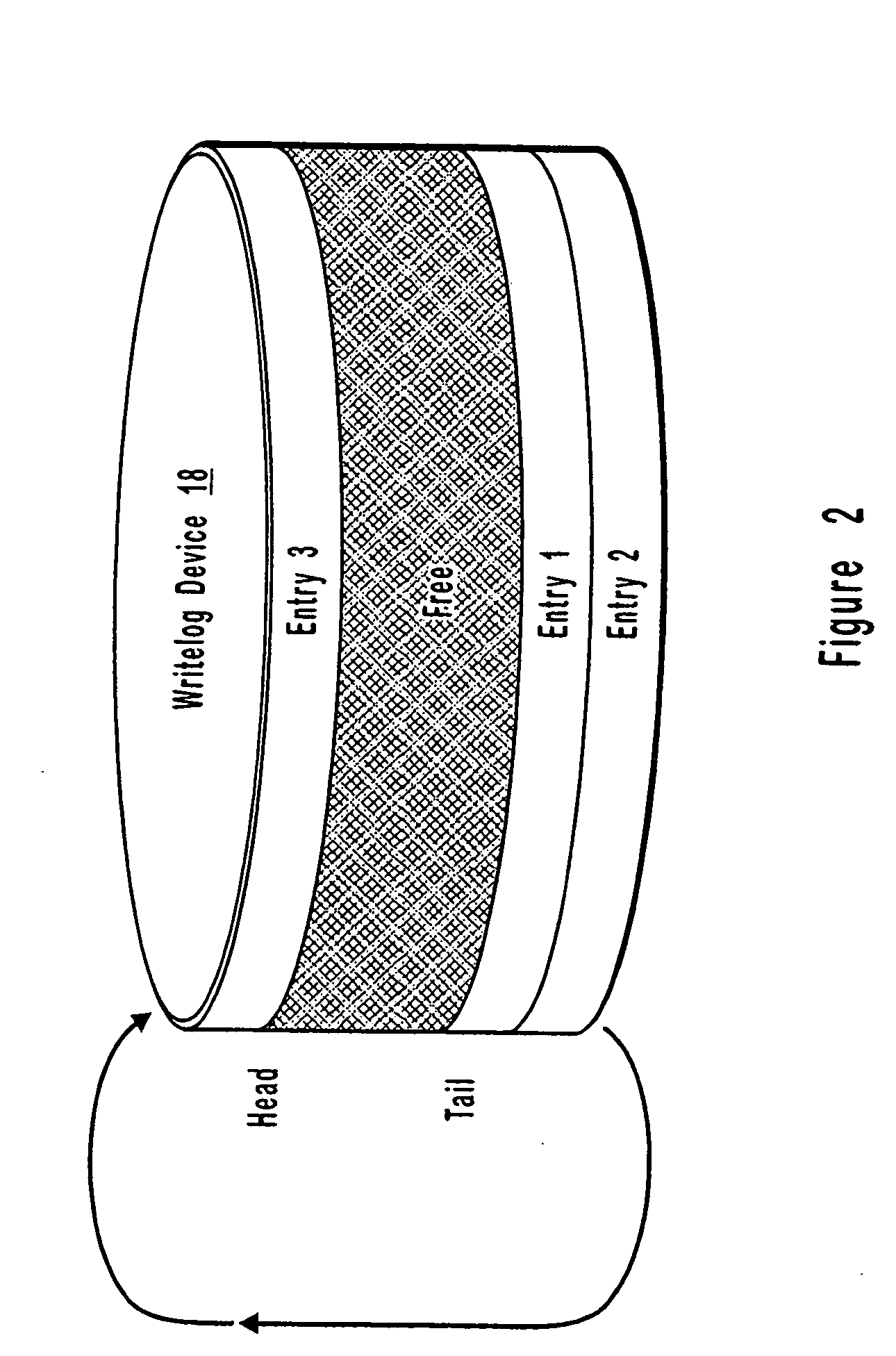Resource allocation throttling in remote data mirroring system
a technology of resource allocation and remote data, applied in the field of computer hardware and software systems, can solve the problems of inability to address, computer system inoperative for an extended period of time or even permanently, and the replication of data is not easy to ensure, so as to improve the synchronization of data, improve the cost of application performance, and improve the effect of application performan
- Summary
- Abstract
- Description
- Claims
- Application Information
AI Technical Summary
Benefits of technology
Problems solved by technology
Method used
Image
Examples
Embodiment Construction
[0034] The following describes various embodiments of the computer network remote data mirroring system in accordance with the present invention. The computer network remote data mirroring system of the present invention provides a coherent copy of application data on a primary computer system, that is, a copy that can be accessed and used, on a secondary computer system in a disaster recovery scenario. The computer network remote data mirroring system in accordance with the present invention is designed to mirror disk-based data from devices on a primary system to devices on a secondary system, across any available TCP / IP network connection. Data is duplicated in substantially real-time to assure integrity between the two computer systems in the event of hardware failure, natural disaster, or human intervention. The computer network remote data mirroring system of the present invention accomplishes this result through time-sequenced transfers of data from the primary computer syste...
PUM
 Login to View More
Login to View More Abstract
Description
Claims
Application Information
 Login to View More
Login to View More - R&D
- Intellectual Property
- Life Sciences
- Materials
- Tech Scout
- Unparalleled Data Quality
- Higher Quality Content
- 60% Fewer Hallucinations
Browse by: Latest US Patents, China's latest patents, Technical Efficacy Thesaurus, Application Domain, Technology Topic, Popular Technical Reports.
© 2025 PatSnap. All rights reserved.Legal|Privacy policy|Modern Slavery Act Transparency Statement|Sitemap|About US| Contact US: help@patsnap.com



